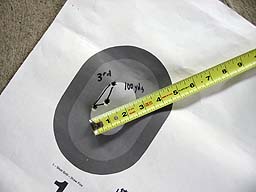Some Tips on Reloading
The Dragunov SVD and Tiger, like many military gas operated rifles, was not designed
with reloading in mind. There are a variety
of design characteristics unique to this class of rifle that can compound
the commonly known dangers of reloading. In all the discussion concerning
reloading for the SVD, I shall try here to point out some of the rather
neglected ones that differentiate this class of rifle:
1. The self loading design does not alert you sizing mistakes. In bolt
guns, lever guns, pump guns, etc., you FEEL the problem when attempting
to chamber a cartridge. You can then go back to the bench and find where
and how the mistake occurred. With a gas gun, you're looking down range,
and the bolt may not be in battery when you pull the
trigger. Such an event is called "out-of-battery explosion".
While it is true there are some design charateristics in the SVD to prevent
this from occurring, I can assure you that they can and do blow-up, from
EXACTLY this kind of mistake. If you continue to reload, you must check each & every cartridge for all sizing dimensions (case length,
headspace of case length, cartridge length, etc) to be certain
they meet all the SAAMI specs! You should order a Small Base Die as this will full-length size your brass so it fits into your
chamber with ease.
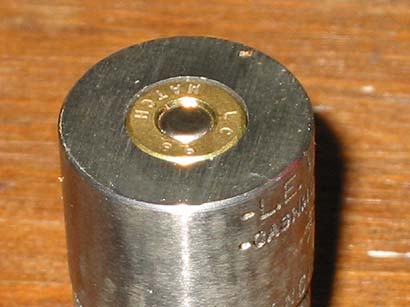
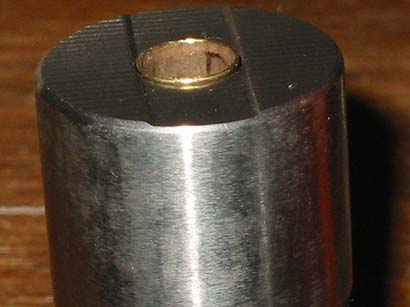
L.E.Wilson cartridge case length gage. Note shell rim sticking out - sign of stretched case.
2. This class of rifle
is extremely brutal to brass. It gets dented, nicked, bent, stretched
and otherwise deformed during the loading, ignition, extraction and ejection
phases. To properly resize all the necessary dimensions, your work is
hard on the brass and will cause it to get brittle. Brittle brass will
fail. If it fails back near the bolt face, lookout! 50,000 PSI will peel
the bottom lip of the bolt clean off, and dump the pressure into the mag
well, inflating it beyond imagination. If it fails up in the chamber,
you'll extract a portion and leave some behind in the chamber. The rifle
will try to load another round, the bolt will be out of battery, and you're
looking down range. See #1 above. The U.S. and N.A.T.O. military brass
cases are thicker and stronger than virtually any commercial case, and the military do not reload their cases! If you continue
to reload,to be safe DO NOT USE THE BRASS
MORE THAN 3 TIMES MAX, (that's 2 reloads & that's pushing it).
3. The SVD and PSL have a free floating firing pin that dents the primer
when chambering a round. In addition, the bolt velocity on loading far
exceeds that of a hand manipulated bolt found in other designs. Improperly
seated primers, sensitive commercial primers, or primer pockets not perfectly
prepared can cause premature primer detonation during the loading phase
long before the bolt closes. A slam fire or an out of battery explosion
will result. If you continue to reload, you must use hard military
primers, and of course do everything else perfectly. Also, avoid
inserting rounds into the chamber by hand instead of using the magazine.
This increases the bolt velocity beyond it's design parameters and will
greatly magnify the dangers mentioned here (because as the bolt travels
forward it slows down as it grabs a round off the top of the magazine).
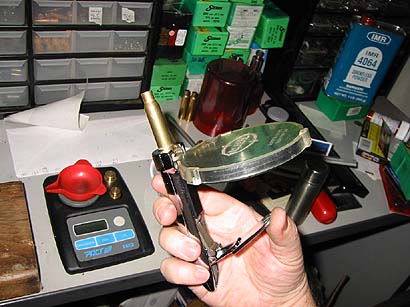
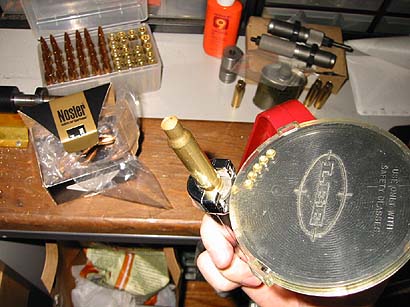
Lake City 7.62 Match NATO case having new CCI #34 military primer seated.

If you own an Izhmach Tiger your bolt has already been modified with a spring-loaded firing pin, making it safer to use with commercial ammunition. Also, most of the .308 NDM-86's have a modified bolt which has a spring on the firing pin.

